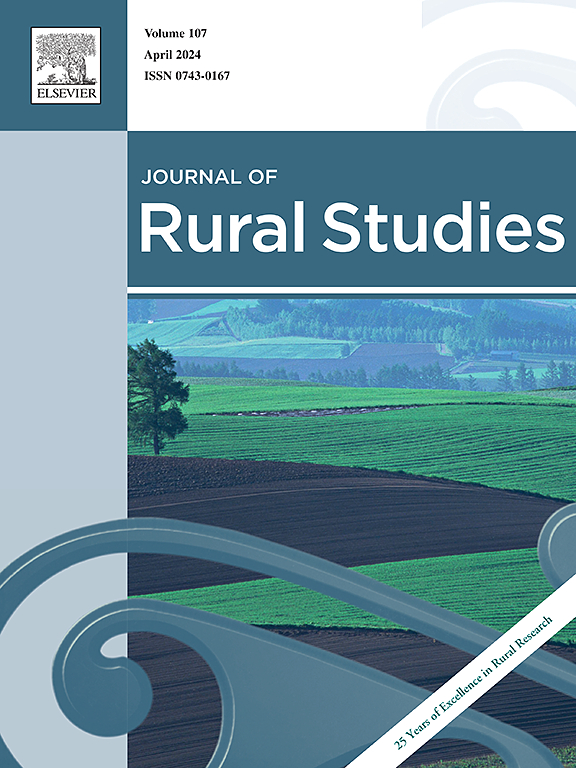揭示中国农村家庭的食品商品化
IF 5.1
1区 社会学
Q1 GEOGRAPHY
引用次数: 0
摘要
随着中国城乡一体化进程的推进,了解农村家庭食品商品化对于揭示农村社会生态系统与城市系统之间的相互联系至关重要。本研究旨在系统识别农村家庭食品商品化的特征,为农村社会生态系统转型机制提供新的视角。我们首先对农村食品商品化进行了概念化,并发展了一个整合生产和消费活动特征的理论框架。随后,我们提出了一种双重测量方法来评估食品商品化的生产和消费方面,引入食品生产商品化指数(FPCI)、食品消费商品化指数(FCCI)和各种食品的销售和购买指数。在实地调查数据的基础上,选取辽宁省作为个案研究对象。结果显示,食品商品化很普遍,33%的家庭完全依赖购买的食品。然而,食品生产商品化的类型是有限的,75%的人销售谷物,而从事豆类、油料作物、蔬菜、牲畜、家禽或水果生产的人不到17%。此外,51%的家庭一半以上的收入来自非农业活动,这表明农村生计从传统农业生产向更多样化的经济结构转变。农村居民的食品消费行为与城市居民的食品消费行为越来越趋同。粮食商品化的过程突出了农村经济中出现的城市生产和生活方式特点,同时也显示出商品化的粮食交易在连接城乡社会经济系统方面的作用。这些发现为制定精准有效的农村可持续发展战略奠定了基础。本文章由计算机程序翻译,如有差异,请以英文原文为准。
Uncovering the commodification of food in rural Chinese households
With the advancement of urban-rural integration in China, understanding rural household food commodification is crucial for uncovering the interconnections between rural socio-ecological systems and urban systems. This study aims to systematically identify the characteristics of rural household food commodification and provide new perspectives on the transformation mechanisms of rural socio-ecological systems. We first conceptualize rural food commodification and develop a theoretical framework that integrates the characteristics of production and consumption activities. Subsequently, we propose a dual measurement method to evaluate both production and consumption sides of food commodification, introducing the Food Production Commodification Index (FPCI), the Food Consumption Commodification Index (FCCI), and sales and purchase indices for various food types. Based on field survey data, Liaoning Province was selected as a case study. The results show that food commodification is widespread, with 33 % of households relying entirely on purchased food. However, the types of food production commodification are limited, with 75 % selling grains but fewer than 17 % engage in the production of beans, oil crops, vegetables, livestock, poultry, or fruits. Additionally, 51 % of households earn more than half of their income from non-agricultural activities, indicating a shift in rural livelihoods from traditional agricultural production to a more diversified economic structure. Rural households’ food consumption behavior increasingly resemble those that of urban residents. The process of food commodification highlights the emergence of urban production and lifestyle characteristics within rural economies, while also demonstrating the role of commodified food transactions in linking urban and rural socio-economic systems. These findings provide a foundation for developing precise and effective strategies for rural sustainable development.
求助全文
通过发布文献求助,成功后即可免费获取论文全文。
去求助
来源期刊

Journal of Rural Studies
Multiple-
CiteScore
9.80
自引率
9.80%
发文量
286
期刊介绍:
The Journal of Rural Studies publishes research articles relating to such rural issues as society, demography, housing, employment, transport, services, land-use, recreation, agriculture and conservation. The focus is on those areas encompassing extensive land-use, with small-scale and diffuse settlement patterns and communities linked into the surrounding landscape and milieux. Particular emphasis will be given to aspects of planning policy and management. The journal is international and interdisciplinary in scope and content.
 求助内容:
求助内容: 应助结果提醒方式:
应助结果提醒方式:


